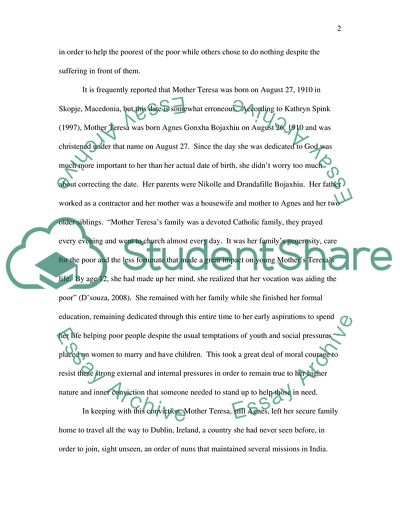Cite this document
(Mother Teresa: An Example of Moral Courage Essay, n.d.)
Mother Teresa: An Example of Moral Courage Essay. Retrieved from https://studentshare.org/people/1716488-moral-courage
Mother Teresa: An Example of Moral Courage Essay. Retrieved from https://studentshare.org/people/1716488-moral-courage
(Mother Teresa: An Example of Moral Courage Essay)
Mother Teresa: An Example of Moral Courage Essay. https://studentshare.org/people/1716488-moral-courage.
Mother Teresa: An Example of Moral Courage Essay. https://studentshare.org/people/1716488-moral-courage.
“Mother Teresa: An Example of Moral Courage Essay”. https://studentshare.org/people/1716488-moral-courage.


